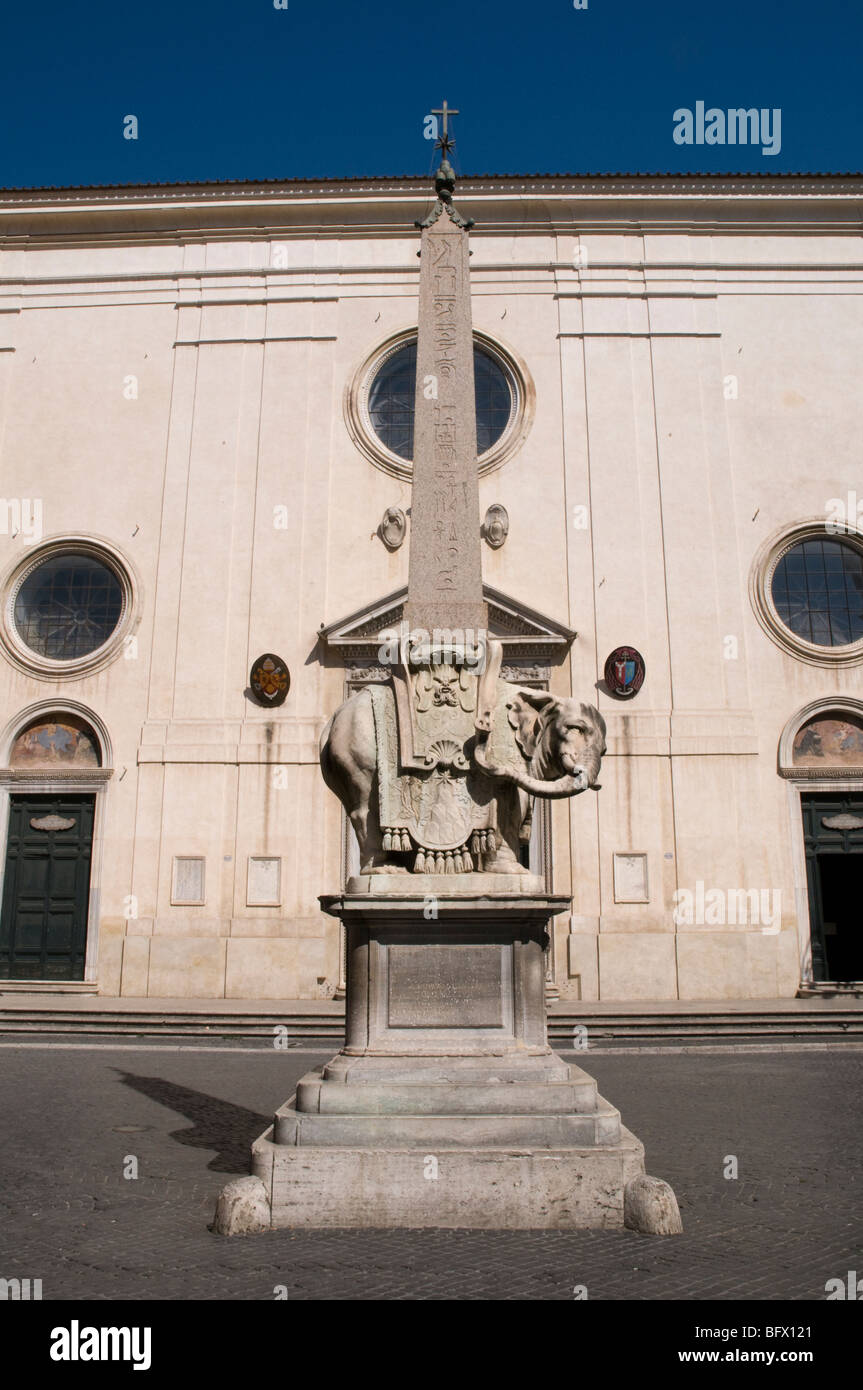The Pulcino della Minerva, a famous Bernini elephant sculpture, a base supporting one of the eleven Egyptian obelisks in Rome.

Image details
Contributor:
Vaios Vitos / Alamy Stock PhotoImage ID:
BFX121File size:
51.4 MB (1.7 MB Compressed download)Releases:
Model - no | Property - noDo I need a release?Dimensions:
3454 x 5200 px | 29.2 x 44 cm | 11.5 x 17.3 inches | 300dpiDate taken:
25 August 2009Location:
Rome, Italy, EuropeMore information:
In front of the church of Santa Maria sopra Minerva there is one of the most curious monuments of Rome, the so-called Pulcino della Minerva. It is a statue designed by the Baroque sculptor Gian Lorenzo Bernini (and carried out by his pupil Ercole Ferrata in 1667) of an elephant as the supporting base for the Egyptian obelisk found in the Dominicans' garden. It is the shortest of the eleven Egyptian obelisks in Rome and is said to have been one of two obelisks moved from Sais, where they were built during the 589 BC-570 BC reign of the pharaoh Apries, from the Twenty-sixth dynasty of Egypt. The inspiration for the unusual composition came from Hypnerotomachia Poliphili ("Poliphilo's Dream of the Strife of Love"), an unusual 15th century novel probably by Francesco Colonna. The novel's main character meets an elephant made of stone carrying an obelisk, and the accompanying woodcut illustration in the book is quite similar to Bernini's design for the base for the obelisk. The curious placement of the obelisk through the body of the elephant is identical. The sturdy appearance of the structure earned it the popular nickname of "Porcino" ("Piggy") for a while. The name for the structure eventually changed to Pulcino, the Italian for a small or little "chick". This may have been a reference to the comparatively short height of the obelisk or, an obscure reference to the major charity of the Dominicans to assist young women needing dowries, who made a procession in the courtyard every year. The latter were once depicted in a local painting as three tiny figures with the Virgin Mary presenting purses to them.